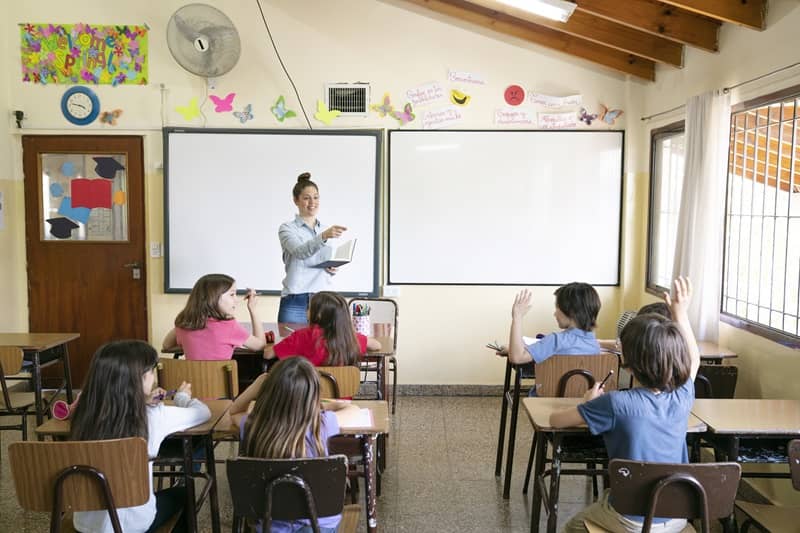Oregon’s public education system is beset with problems. Too many students drop out, and too many of those who stay aren’t achieving to the levels we expect. The national publication Education Week ranked Oregon’s public education system 43rd in the nation in 2011, and our K-12 achievement level only earned a D grade last year.[1]
Some people argue that more money will solve our schools’ problems. But with total expenditures now over $11,000 per public school student, according to the nation’s largest teachers union,[2] it’s hard to believe that $330,000 for each 30-student classroom is not enough money to get education right.
What happens in our public school system is driven more by politics than anything else, and for many years the most powerful political force driving education decisions in our state is what we call the Status Quo Lobby. While many children continue to fall through the cracks, this Lobby fights for more of the same: more powerless parents, more powerless principals, more hamstrung teachers, more taxpayer spending, and more control over the decisions parents should make for their own children.
Who is the Status Quo Lobby? Primarily, it’s the Oregon Education Association, the teachers union that represents most public school teachers in this state. The OEA is primarily concerned with the paychecks of its members, not with the achievement and success of Oregon schoolchildren. Unfortunately, what’s best for OEA members’ pocketbooks isn’t necessarily best for our kids’ education. Make no mistake, huge financial interests rest on the bulk of the laws for which they lobby. And, the Status Quo Lobby is often the biggest contributor to political campaigns in Oregon.
In a word, the Status Quo Lobby fights for more centralization, which Nobel Prize winning economist Milton Friedman said is responsible for much of the decline in the public school system over the decades.
In 2006, the year he died, Friedman noted, “When I went to elementary school, a long, long time ago in the 1920s, there were about 150,000 school districts in the United States. Today there are fewer than 15,000, and the population is more than twice as large.”[3] Friedman blamed what he called “your friends in the teachers union” for this centralization and corresponding decline in educational results for America’s children.
The Status Quo Lobby has long claimed to lobby in the name of helping kids. But it itself typically has the most to win or lose―in terms of money and power―when it shows up to a hearing for proposed laws. While children’s futures are at stake, the choices legislators make today often have a delayed impact for kids. The Status Quo Lobby, however, often sees a quick impact to its bottom line.
Because far too many people seem to think these lobbyists are just in it “for the kids,” Cascade Policy Institute has launched a new website called “Enough with the Status Quo Lobby” at www.StatusQuoLobby.com. At this website, Oregonians can discover just who the Status Quo Lobby is, which policies it advocates, and what kinds of results are seen from these policies.
At this site Oregonians also can see just how the Status Quo Lobby stands in the way of real education reform, often labeled “school choice.” Milton Friedman first described school choice in 1955 as letting parents choose which schools their children attend―public, private, religious, or home school―with the money following the student.[4] Most Oregon parents want such choices,[5] and they shouldn’t let the Status Quo Lobby stand in their way.
To help educate voters on how to keep their legislators accountable for their voting on educational policies, the StatusQuoLobby.com website includes a report card grading every legislator during the 2011 legislative session on their votes either supporting the Status Quo Lobby, or supporting school choice for Oregon’s children.
Oregonians also will be able to see how much money the Status Quo Lobby has contributed to each legislator’s campaigns, along with videos of them speaking on policies affecting the education of Oregon’s children.
We urge all Oregonians interested in learning about who is standing in the way of real educational reform in our state to go to www.StatusQuoLobby.com and see for yourselves.
Endnotes
[1] Report Awards State Grades for Education Performance, Policy…, Education Week, January 11, 2011
2 National Education Association report Table F-2 (pg 39)
3 Teachers Unions and Public Schools: Who Needs ‘Em?, latimes.com, Bob Sipchen, July 3, 2006
4 The Role of Government in Education, Milton Friedman, Economics and the Public Interest, 1955
5 Nearly Nine of Ten Oregonians Would Opt Out of Regular Public Schools, Cascade Policy Institute, Steve Buckstein, January 5, 2009











